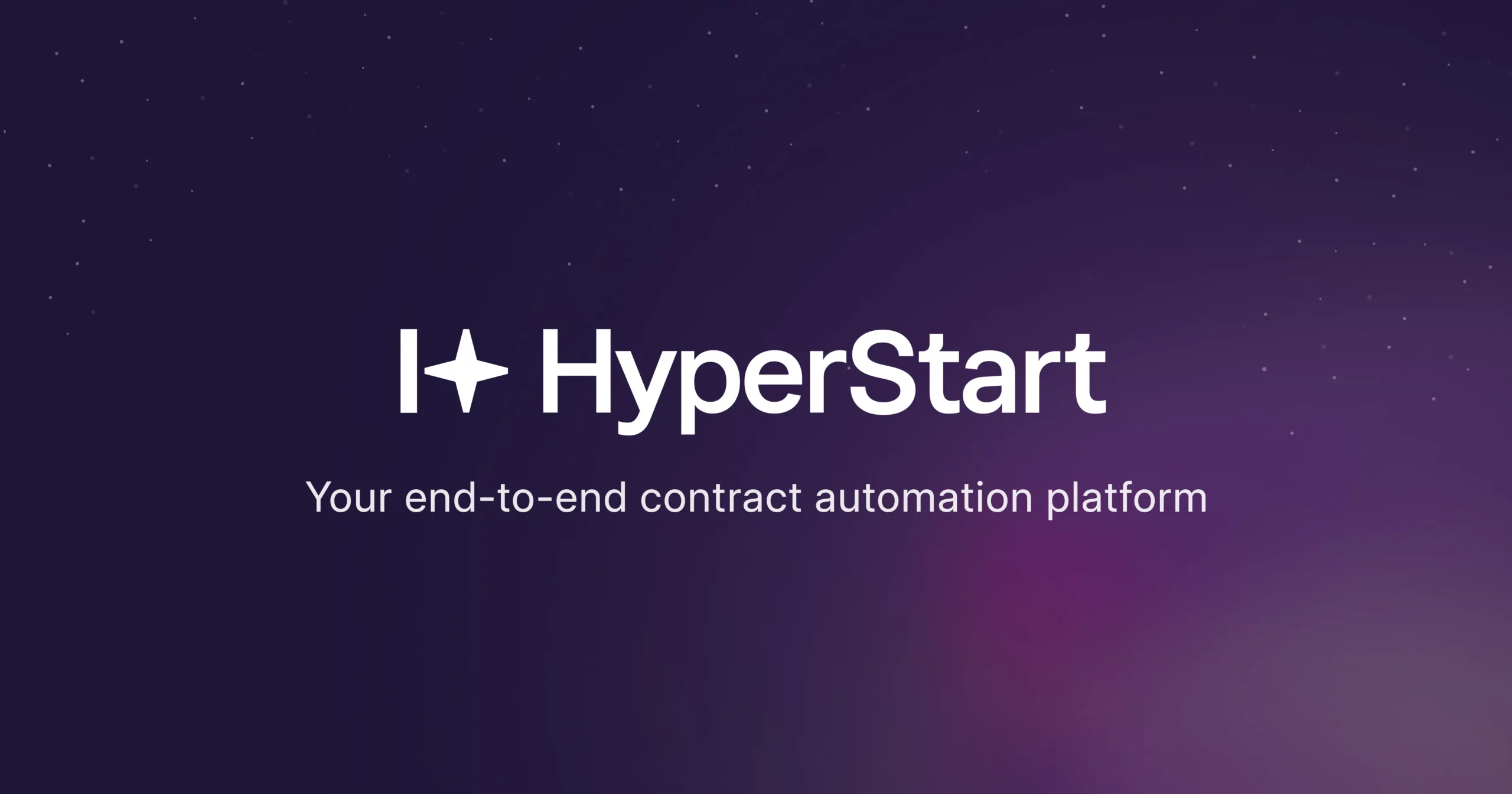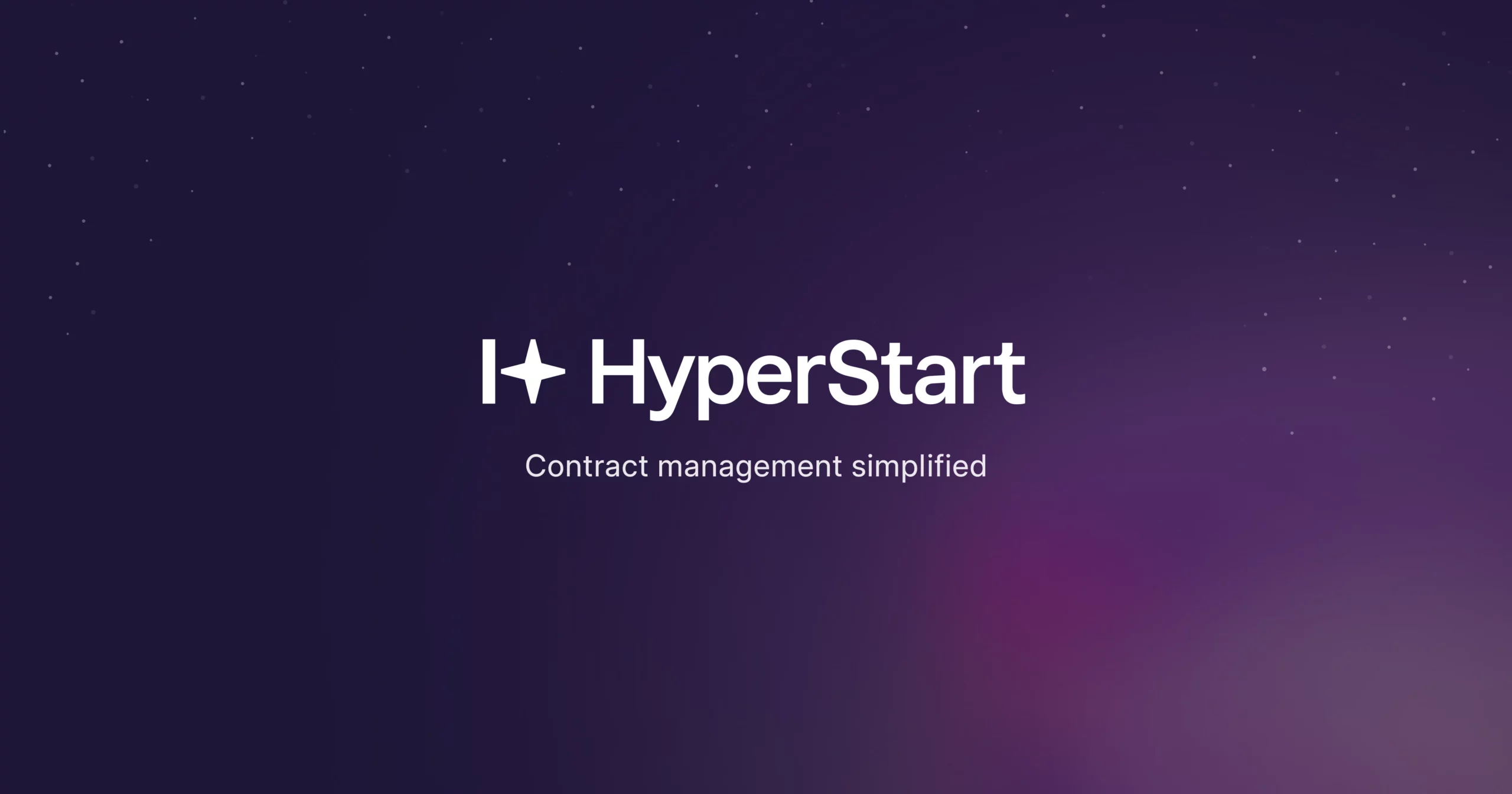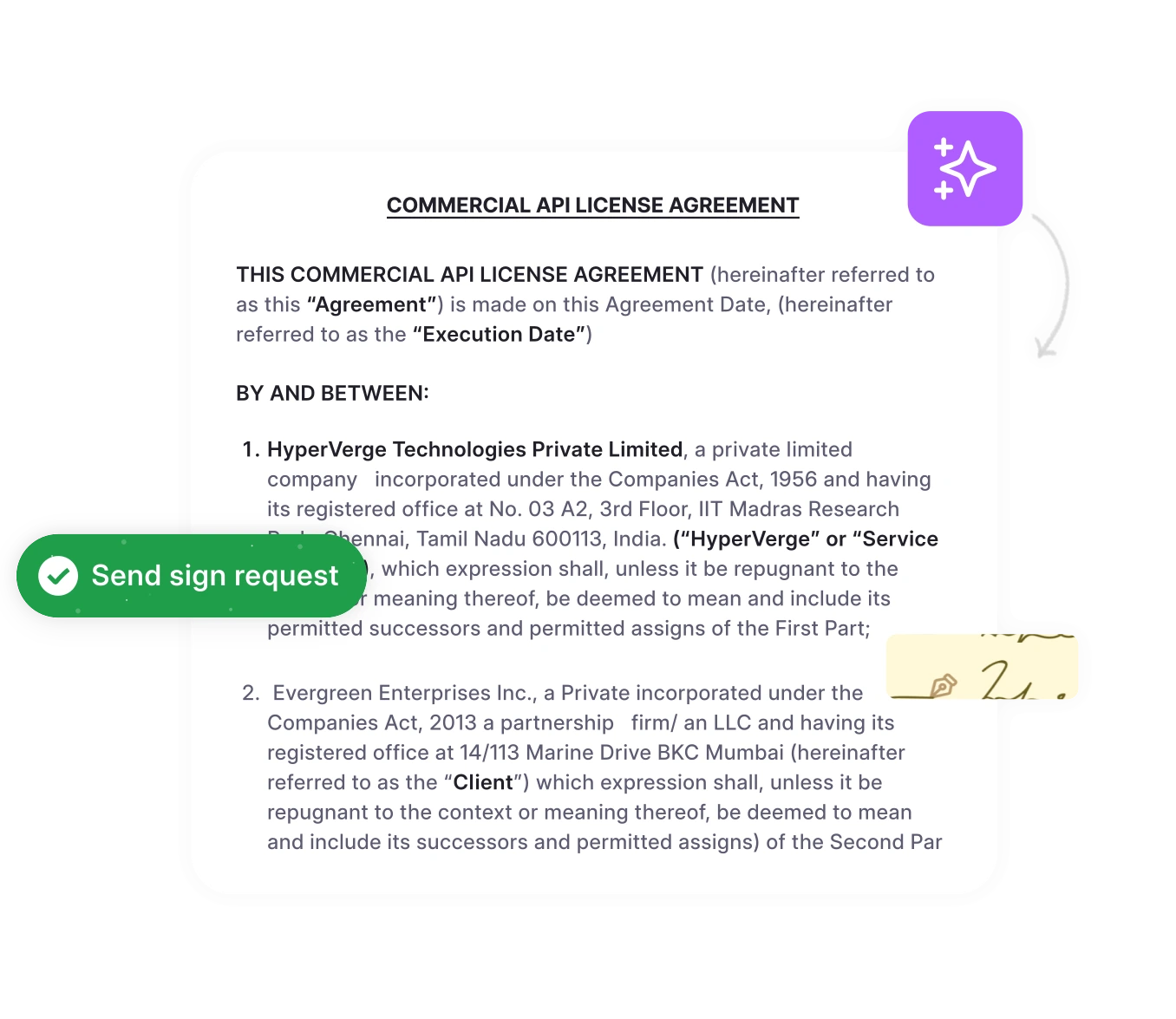Imagine you have a new legal assistant on your team. A work ethic like Rachel Zane and a brain like Michael Ross from Suits. She’s very efficient. Just the extra pair of eyes that phenomenally reduces the risk of missing significant things. That’s what a contract review automation software should feel like. This buyer’s guide aims to help you find that co-pilot.
We’ll go over the what, the why, the who, and the how. Dive in.
What is contract review automation software?
Contract review automation software is a legal technology solution to supercharge manual review processes for faster, safer, and more efficient analysis of contracts. It uses AI-powered metadata extraction to markup clauses that need review. Research reports:
Companies overpay 30-50% for contracted services. (McKinsey)
Reviewing a low-complexity contract can cost up to $6900. (WCC)
Human contract review takes an average of 92 minutes. (SuperLegal)
By 2025, 60% of manual models will be replaced by context-driven AI analytics models. (Gartner)
Who uses contract review automation software?
The primary users of contract review automation software are in-house legal general counsels and other legal professionals. Secondary users include procurement, sales, human resources, and finance professionals. Let’s go over the use cases for each department.
The software sifts through high volumes of data, pinpoints inconsistencies, ambiguous terms, and non-compliant clauses. This helps boost legal productivity and precision, reducing compliance and financial risks hidden in contracts. As a co-pilot for your work, it automates and augments your work. It revolutionizes how legal professionals understand, analyze, and negotiate contracts while respecting security and privacy. As well as how secondary users interact more efficiently with contracts at different touchpoints. Let’s see how:
Legal professionals
AI redlining automatically performs a first-pass review of contracts highlighting acceptable provisions in green and non-compliant ones in red according to each organization’s internal and governing standards. Alternative acceptable wording suggestions are provided from precedent libraries with a single point-and-click on Microsoft Word, an environment familiar to legal professionals.
In-house counsel
As stewards of the company’s legal affairs, in-house counsels use contract review automation software for high-volume contracts. Using a contract review tool is helpful for legal teams in risk management and compliance across construction, healthcare, technology, and supply-chain industries.
Law firms
Law firms deal with high-volume contracts, so legal firms can automate legal tasks such as managing contracts and improving efficiency. Automation software for contract review accelerates their ability to deliver accurate and timely reviews.
Compliance officers
Compliance officers’ job is to leave no stone unturned in internal and regulatory compliance requirements. Compliance officers use automation software to detect what doesn’t work for their organization.
Paralegals and legal assistants
Paralegals and legal assistants use automation software to support attorneys and counsels with initial reviews.
Secondary users in non-legal professions
Legal professionals who use contract management software often use it for other downstream activities that touch every point in the contract lifecycle. Contract review automation ensures quick collaboration across internal and counterparty teams so anyone interfacing with contracts. This equips all teams in their native systems to focus on individual KPIs instead of contracting grunt work.
Procurement managers
Procurement managers receive large volumes of supplier contracts every day. Contract review automation helps them efficiently analyze supplier agreements for risky terms, reducing the risk of costly oversights.
Sales managers
Sales can also perform an initial review with standard clause suggestions for low-risk, high-volume contracts. The counterparty can comment on counter clauses that must be changed or don’t comply.
Human resources managers
A contract review tool comes in handy for high-volume, low-complexity HR contracts like employment contracts, non-disclosure agreements, and other employee-related documents. This ensures accuracy, consistency, and compliance with labor laws and converts the saved time into clear commercial benefits for the company.
Finance officers
Finance teams can leverage the most under-utilized source of financial data through contract review. Automation tools can help them quickly identify potential financial risks, gain visibility on cash flows, and make better financial and risk management decisions.
Get a first-pass review in seconds.
Save contract review time by 75%. Only with HyperStart.
Why is contract review important?
According to a survey by LegalOn Technologies, contracts consume anywhere between an hour to over 20 hours per document for review. Automating this process is significantly beneficial to transforming your operations for efficiency, accuracy, and compliance. You get to keep more work in-house more affordably. There’s reduced dependence on outside counsel. Paralegals can be deployed for higher-value tasks. You can also roll it out organization-wide to support non-legal teams with seamless integrations.
Contract review automation is best suited for large volumes of standardized contracts like non-disclosure agreements (NDAs), master service agreements (MSAs), service level agreements (SLAs), data processing agreements (DPAs), API Licence Agreements, and Software License Agreements.
Besides, for legacy organizations and systems with tool stacks that are inherently resistant to regulatory change, manual updates and re-writing rules are more expensive, error-prone, and time-consuming. The software auto-highlights clauses that deviate from new internal compliance frameworks and regulatory guidelines. This saves significant resources on maintenance and helps you navigate a dynamic complex regulatory landscape better.
The benefits of AI contract review automation
Highlights
75% time saved
5x contracts reviewed quarterly
5 m contract creation to completion
90% reduced costs
<1 week set up
AI contract review supersedes traditional methods of redlining in more ways than one. Read how below.
1. They are more compliant and consistent.
They eliminate manual errors so nothing is compromised, misplaced, or lost in desk time because of traditional routing and approvals. They directly combat challenges with legalese with playbooks that contain standardized contract language.
They analyze risk and offer alternatives. Instant contract risk analysis reduces reliance on legal teams and expedites the time to signature.
They automatically detect clause and contract compliance. They flag unclear, inconsistent, or outdated terms to avoid any unpleasant surprises or mistakes.
2. They empower non-lawyers and boost legal efficiency.
Non-legal teams can independently review and negotiate contracts with self-serve capabilities. Which is a game-changer for non-legal teams with independent time-bound KPIs to fulfill. They identify and remedy growth-impending bottlenecks in seconds for quicker decisions.
Legal teams can quickly investigate a matter which is key in strategic work. This empowers them to do more challenging work such as fundraising, changing internal processing, providing strategic advice, and negotiating settlements.
Review tools help scale operations effectively, reducing contract admin time and effort.
3. Augmented features give you better control.
Faster review cycles lower costs and help sales teams close deals faster.
Offer a reliable source of truth for every department to enhance collaboration within and between teams.
Automated tracking, versioning, and access control help you trace contracts at every stage of the contracting lifecycle.
A secure repository holds and protects executed agreements with a detailed audit trail of all track changes. This helps create and store preferred clauses and language to enforce business-wide consistency and compliance.
9 Key functionalities in contract review automation
Artificial intelligence extracts metadata that facilitates contract organization, analysis, review, and retrieval across the contract lifecycle. This saves time exponentially and gives you a better bargaining chip for negotiations. Here’s how it works with specific functionalities across various touchpoints:
1. AI-Review and Redlining
AI-led technology-assisted review (TAR) accelerates the first-pass review stage by providing quick, thorough, and auditable coding. It understands how your organization prefers to contract with precedent. Like a legal ‘spell-check,’ it performs a traffic light analysis highlighting areas with red that deviate from your compliance and gold standards. Suggestions offer a balanced middle-ground while removing invalid clauses, vetting relevant clauses, and inserting missing clauses. You can choose to accept dealbreaker suggestions and skip non-critical ones.
2. AI Summarization
AI summarization extracts key clauses and provisions to give you the essence of a contract before you hit send. The functionality is protected by a final review highlighting critical aspects and potential risks and a streamlined contract review process that sufficiently protects your business and gives you the confidence you need to move faster.
3. MS Word Plugin
Fragmented communication channels and multiple versions hinder collaboration and business efficiency. The MS Word plugins enable real-time collaborative editing with access control. They offer a familiar environment for legal to navigate. Other complementary functionalities like comments, audit trails, and versioning allow collaborators to track changes efficiently and maintain a transparent log of revisions while staying accountable and compliant.
4. Playbooks
As an integral part of AI contract review, playbooks guide the review process as you navigate a large portfolio of contracts that are impossible to review humanly. They recommend standard and fallback language to help you automatically identify and adhere to internal guidelines and external policy changes without external manual input.
5. Pre-built Integrations for a Connected Ecosystem
Most contract review software today integrates seamlessly with various tools and systems. They streamline your workflow with pre-built integrations to cloud storage services like Drive, Docs, CRM platforms like Salesforce, and e-signing solutions like DocuSign. This eliminates data silos and fosters collaboration while addressing company-wide contractual obligations and admin work. All stakeholders can have access to the latest versions and contribute effectively.
6. Auto-populating into the Repository
When contracts are signed, they are automatically stored in an AI-powered contract repository so you don’t have to enter contract data manually. This offers an unrivaled oversight of obligations buried in contracts. This also captures, categorizes, and surfaces granular insights like upcoming renewals, termination deadlines, hidden risks, and so on.
7. AI Draft with Gen AI
Among the spectrum of contracting work that consumes time and money is drafting. Automated contract drafting uses generative AI to draft new contract wording or provisions based on how you prefer to contract. It translates natural language into contractual terms.
8. Chatbot
CLM chatbots provide instant and legally accurate answers to frequently asked questions about information hidden in your contract database. You can ask questions about the number of renewals this quarter, the insurance terms in a specific region, or the liability caps for deal sizes over $$$. It functions like an assistant that fetches you the information you need or takes you to it. This helps elevate contract understanding and accelerates the negotiation process.
9. Prompt-Based Automation
Other repetitive tasks can be automated with prompt-based functionalities. They allow you to instruct the AI to handle complex language nuances, highlight standard clauses and potential risks, flag anomalies, and integrate seamlessly with your organizational workflows. You can assign tasks to stakeholders, track progress, and accelerate contract review timelines.
Everyone goes to lawyers they trust. Which is harder to do with an AI you cannot hold accountable or expect the art of negotiations and bargaining from. For lawyers, AI innovation means that their skills and types of jobs will evolve into more valuable and interesting things. Of course, human judgment is still required to ensure that automated contract review decisions are not false positives. But it sure puts you in a better place if you focus on strategy early on. Tech won’t make lawyers redundant. It’s going to make them more efficient.
Top 5 contract review automation software
Picking your CLM can revolutionize every touchpoint at which contracts are handled in your organization. We’ve picked out the top 5 players in contract review automation.
1. HyperStart
HyperStart is an end-to-end contract lifecycle management tool that supercharges contract creation through completion to commitment in one place. Built on proprietary AI with 99% accuracy, and trained on over 1 billion documents, its record 5-7 day implementation remains unbroken.
Key features
Create error-free contracts with standardized templates
Accelerate workflows with automated no-code workflows
Redline and review contracts in a collaborative MS Word environment
Sign with native sign options like hand-drawn or OTP or with integrations to DocuSign and AdobeSign
Store your contracts in a unified repository powered by smart filters
Track granular contract provisions and never miss an obligation again
Cons
HyperStart currently offers up to 20 integrations that address the most common needs. You can speak with their incredibly responsive product team for specific integrations outside this stack.
2. Juro
Juro is a popular choice for contract review and automation with an intuitive user interface and robust contract workflows.
Key features
User-friendly design experience for easy navigation
Browser-based review and editing capabilities
AI-powered drafting, redlining, and summarization tools
Threaded comments and suggestions for collaborative editing
Cons
No extensive customization options for granular workflows and access control, making collaboration limiting and inflexible
There’s room for better analytics and reporting
3. Legly.io
Legly aims to address contract review, storage, and tracking challenges. It was purpose-built for legal technology providers, law firms, and enterprises and has dashboards and APIs to extract metadata, analyze, organize, and better understand contracts.
Key features
Review dealbreakers in the browser.
Analyze and follow up with smart search and bird’s-eye-view of your contracts.
Populate systems like CLM, CRM, and other repositories with KPIs
Cons
There isn’t enough social proof of Legly’s product expertise or industry authority on review websites like G2 or Capterra.
4. Kira
Kira is an award-winning ML-powered contract analysis software that was acquired by Litera. The software niches down in the M&A practice to enhance due diligence processes and corporations, retail, insurance, proptech, and financial services.
Key features
Import files in over 60 formats
Automated contract analysis and summaries
In-browser editing and workflow functionalities
Create and export custom reports on specific data points
Cons
Kira can be expensive compared to other rivals.
Its AI engine is limited and only extracts information that is pre-saved on it.
5. Luminance
Luminance is a legal-grade AI built of a proprietary LLM to automate the contracting process from generation to negotiations and analysis.
Key features
First-pass contract analysis in MS Word
AI chatbot for Q&A and automated redrafting
AI-driven repository for granular insights
Cons
Luminance is a best-of-its-kind software for contract review and analysis but it does not comprehensively cater to post-execution contract touchpoints.
Which software is right for you
Shopping for a contract lifecycle management is like choosing where you live or work or whom you choose to partner with. It is a strategic decision with significant implications for your company now and in the future. Make sure you thoughtfully identify the stakeholders that work for you and speak with them about your specific needs. Here are some pointers before you do:
1. Identify your ‘why’
Clearly define your reasons for CLM software. Spell out what are the primary issues you need to address. Is it reduced review times, better tracking, or granular workflows with better security and control?
2. Determine your contract types and volumes.
Get ready to talk numbers on pricing and implementation speed with each vendor. Ballpark figures on contract volumes and a rough description of the types of contracts that pass through the organization should suffice.
3. Scalability
Estimate the vendor’s capacity to handle your past and present contracts based on which the AI models will be trained. Be prepared also to discuss the future scale at which you wish to operate to assess their ability to stay aligned with your future goals and roadmap.
4. Adoption
Get to know the software better with smaller volumes of contracts to test the usability and interface. Look for integrations that can work seamlessly with your existing tech stack. While the CLM purchase may come from the legal budget, it influences the organization’s contracting processes.
Why choose HyperStart for Your Business?
Each CLM vendor has specific capabilities. What makes sense for you may not make sense for another company that does things similar to yours. Here are some reasons to consider HyperStart when you’ve done your homework.
HyperStart every touchpoint a business has with contracts into one unified platform. It helps lawyers spot critical details and find what they seek so no obligation is overlooked.
1. Ground-breaking AI
With advanced expertise in AI since 2014, HyperStart detects missing clauses and minor differences and a comprehensive understanding of contracts. It breaks down documents on a range of parameters and identifies anomalies and risks at the outset immediately upon import across different jurisdictions and governing laws. So you can go back to doing more valuable and interesting things.
2. Begin matters in hours
HyperStart is incredibly easy to use. It is deployed via the cloud and gives you instant access wherever you are without pre-training. You get to experience real value from day one. It is intuitive and easy to deploy across offices and departments. Our quick training videos can help org-wide rollout across offices and departments without a fuss.
3. Legal-grade security
HyperStart is built for the highest levels of security for the world’s largest enterprises. We have a robust information security approach and are ISO 27001:2013 SOC Type 2 and GDPR certified.
4. Exceptional support
We’re always outdoing ourselves, keeping abreast of best practices and tailoring suggestions for you. Our responsive support is committed to helping you realize ROI faster and making the most of the software.
Wrapping up
Contract analysis software is trained to recognize and surface key contract data from large volumes of contracts and creates actionable insights to respond to potential risks before signing. It flags inconsistencies and recognizes patterns and deviations with AI without having to train new models every time around. Many models are now trained to learn by doing rather than by coding, creating self-reliant systems.
At HyperStart, we’re continually innovating the way customers work with purpose-built solutions and enterprise-grade security. So far, we’ve been commended for an unrivaled AI engine, 75% faster contract review times, and 90% contract cost savings in pre-execution activities. And we only aim to make them better. See for yourself.












